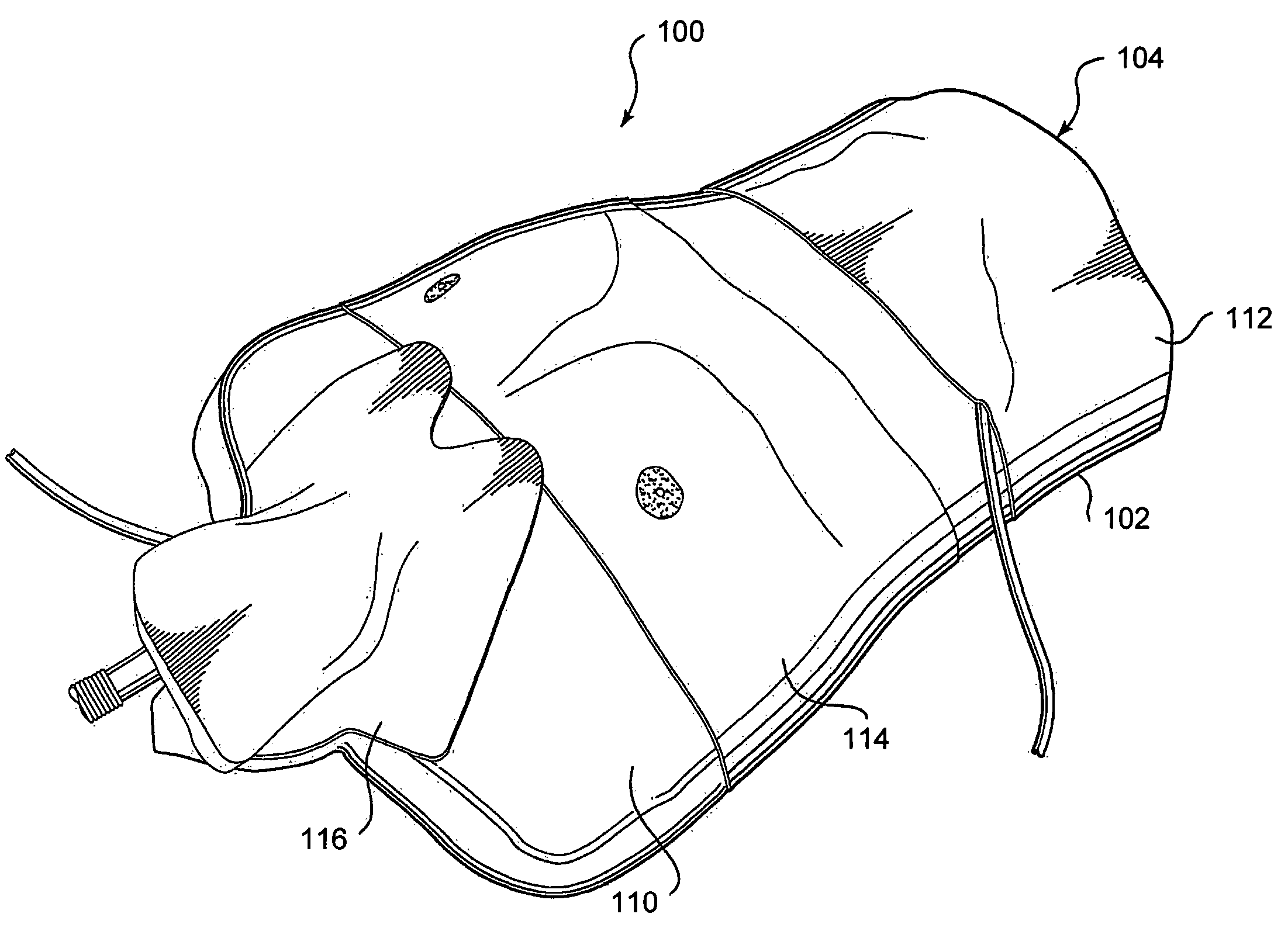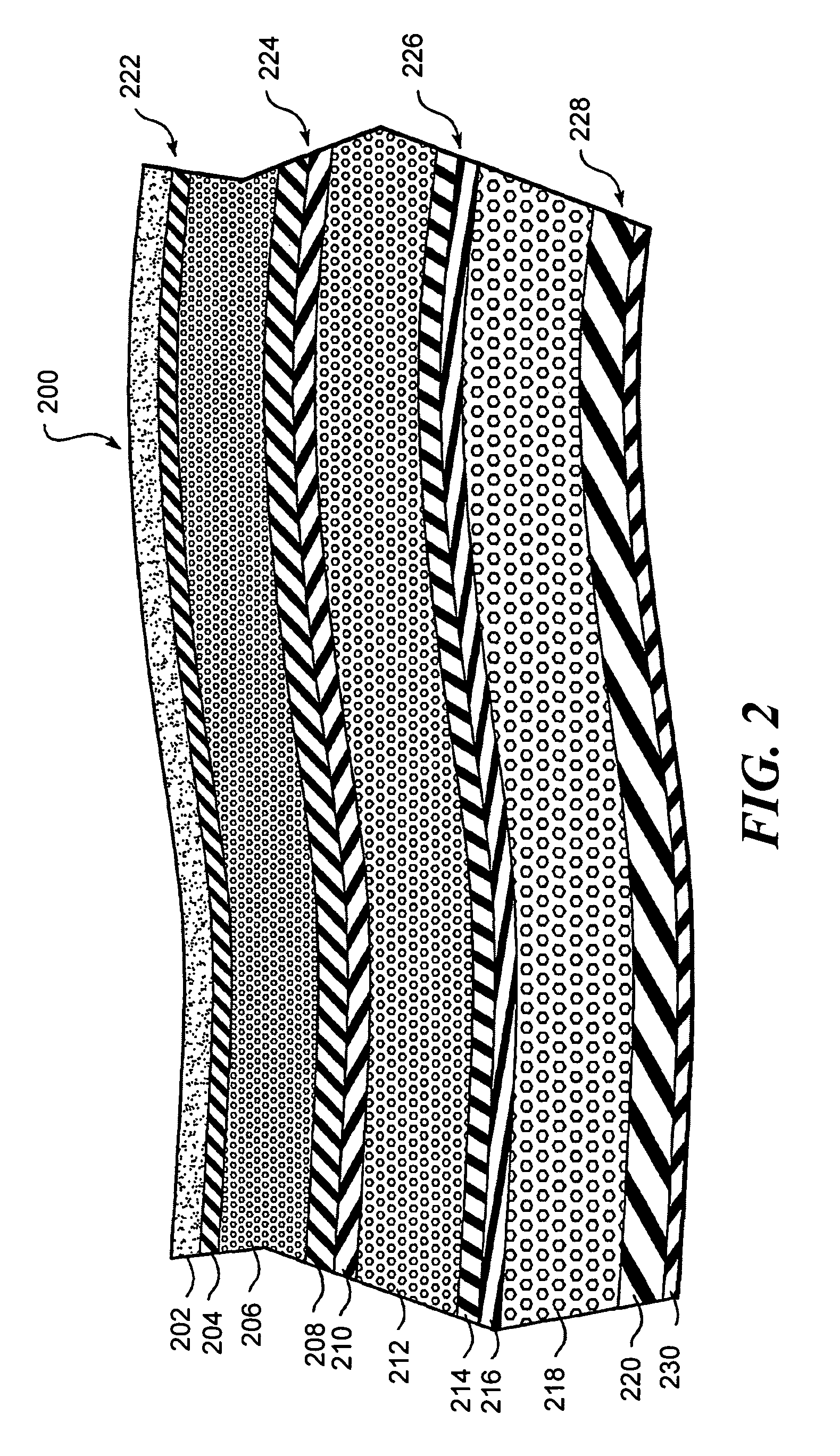Medical physiological simulator including a conductive elastomer layer
a technology of conductive elastomer and simulator, which is applied in the field of simulated physiological structures, can solve the problems of not being well suited to all types of training, not always readily available cadavers, and worsening the condition of patients, so as to enhance the realism of the simulator
- Summary
- Abstract
- Description
- Claims
- Application Information
AI Technical Summary
Benefits of technology
Problems solved by technology
Method used
Image
Examples
Embodiment Construction
Overview of the Present Invention
[0066]In the present invention, flexible circuits formed of conductive elastomers are incorporated into simulated physiological structures used for medical training and simulations. The flexible circuits can be employed to provide feedback indicating how well a simulated procedure was performed on the simulated physiological structure.
[0067]The use of a conductive elastomer, as opposed to a conventional metallic wire conductor, enables a more realistic simulated physiological structure to be achieved, one which has tactile characteristics like that of a corresponding real physiological structure. Metallic conductors generally do not look or feel like any naturally occurring physiological structure. In contrast, the composition of elastomeric materials can readily be controlled to both visually and tactilely simulate many different physiological structures, such as tissues, organs, cartilage, and bone. While a portion of the circuitry associated with ...
PUM
 Login to View More
Login to View More Abstract
Description
Claims
Application Information
 Login to View More
Login to View More - R&D
- Intellectual Property
- Life Sciences
- Materials
- Tech Scout
- Unparalleled Data Quality
- Higher Quality Content
- 60% Fewer Hallucinations
Browse by: Latest US Patents, China's latest patents, Technical Efficacy Thesaurus, Application Domain, Technology Topic, Popular Technical Reports.
© 2025 PatSnap. All rights reserved.Legal|Privacy policy|Modern Slavery Act Transparency Statement|Sitemap|About US| Contact US: help@patsnap.com



